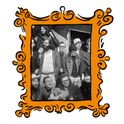Soon after Syd Barrett's death, Radio 4 played an interview he recorded with Hans Keller. It is a perfect 1960s culture-clash moment. The po-faced Keller with his strong Germanic accent demands to know "vy ze music must be zo loud!" The cliché would normally involve an inarticulate rock musician, mumbling ums and ers, but Syd calmly bats back all Keller's forays, sounding as if he was born to be a Radio 4 pundit.
Hearing his speaking voice again after all these years brought back memories of old conversations and reminded me of the cultured intelligence that lurked inside the pop star. It also startled me to realise that the interview, with its references to Pink Floyd moving from club to concert hall, must have been from May 1967, just before or after the "Games For May" show at the Queen Elizabeth Hall. Three weeks after that concert, I watched Syd standing on stage at the UFO Club, his arms at his sides, staring vacantly into the bubbling lights as the group did its best to carry on behind him as a three-piece. Within months David Gilmour was propping him up and by 1968 the group had left him behind on their way to fame and fortune.
The irony of their success, of course, is that despite very few Floyd fans having ever heard Syd's voice or guitar, he is—in Britain at least—more famous than any of the other four, as the media response to his death has shown. The day after it was announced, Syd was on the front page of four broadsheets and had long items devoted to him on Newsnight and Radio 4.
When Syd joined what was supposed to be a blues band, he gave them a name borrowed from two obscure blues singers, discovered deep in the liner notes to a Blind Boyd Fuller compilation album. No one knew what Pink Anderson and Floyd Council sounded like, but Syd's oblique and knowing appropriation of their names provided this Cambridge outfit with the perfect handle.
Pink Floyd's first job in London in 1966 was to provide the soundtrack to a film made by a London painter and consisting entirely of abstract shapes. Light played across the screen as they recorded the score. They liked the combination of their music and coloured lights—the accident of that commission providing a key element of psychedelic London in the 1967 summer of love.
Six months later, the band were signed to EMI and crowds were queuing down Tottenham Court Road to hear their Friday night shows at the UFO Club. Bassist Roger Waters and manager Pete Jenner were the spokesmen of the group, the ones I dealt with about recording sessions and gig times. But I liked Syd immensely. Among the many possessions my life has scattered by the roadside is a tape of songs Syd gave me that winter. The Floyd couldn't incorporate everything he wrote into their repertoire and I was keen to see if any other artists of mine might want to record one of them. The tape—in my idealised memory—is wonderful: just Syd's voice and acoustic guitar, the songs witty, melodic, charming, vulnerable, often flirtatious and concerned with the pursuit of an elusive girl like the "boon tune" which was recast as "Here I Go" on the Madcap Laughs, one of his two solo albums. David Bowie, who recently paid homage to the Syd/Floyd single "Arnold Layne" at the Albert Hall, says Syd was one of the few pop stars at that time who sang in an unaffected English voice, making no effort to sound American.
Was he an "early-adapter" acid casualty? It was not a phrase we heard a lot of before it was used to describe Syd. LSD was strong but pretty pure in those days. But by summer 1967 it was often heavily adulterated with amphetamines and other substances cranking up the rate of "bad trips." There may have been more to it than that, but I am not the one to suggest another source of Syd's collapse.
It is interesting to chart the waxing and waning of the fame of lost pop stars. John Lennon is the most iconic of all, of course, but his value seems to have fallen in recent years compared with the rise of Nick Drake, Kurt Cobain and Jeff Buckley. Janis Joplin never really competed with Jimi Hendrix or Jim Morrison, and Morrison himself seems to have gone off the map a bit recently compared with Hendrix. Syd, despite his quiet retirement to Cambridge, must be counted among those on this list. For me, the pictures of the pudgy, balding 60 year old man on a bicycle (an echo of my favourite Barrett song) had no connection to the quirky, charismatic presence I knew in 1966-67; I did my mourning that June evening when he squeezed wordlessly past me at the entrance to UFO.
The ability of generation after generation of fans to imagine these stars' lost futures seems essential to the romantic myth. Lennon had completed an immense body of immortal work at the time of his death and had begun, in some eyes, to sully his legacy with wacky Yoko duets. Janis was beginning to sound dated when she died. But Syd, like Drake, Buckley and Cobain, combined a story of fragility and self-destructiveness with a world of imagined possibility. He "shone like the sun"—so brightly that legions of fans could both imagine what might have been and at the same time identify with the quiet scribbler and doodler who left behind Pooh-like sketches of girls and bicycles and paths through the woods.
Most immortal pop music begins as "outsider art" and moves to the mainstream almost in spite of itself. Lead guitarists lusted after by girl fans usually entered their teens as ugly ducklings, practising endlessly in suburban bedrooms. Stardom is the revenge of the nerd and the trainspotter. Those who never escape the bedroom, psychologically at least, need heroes who make the leap for them. The arc of Syd's career, burning like a comet in its solo journey across the heavens before returning to a boring life of journeys to the corner shop or the library, is the kind of life with which the obsessional fan can identify.











